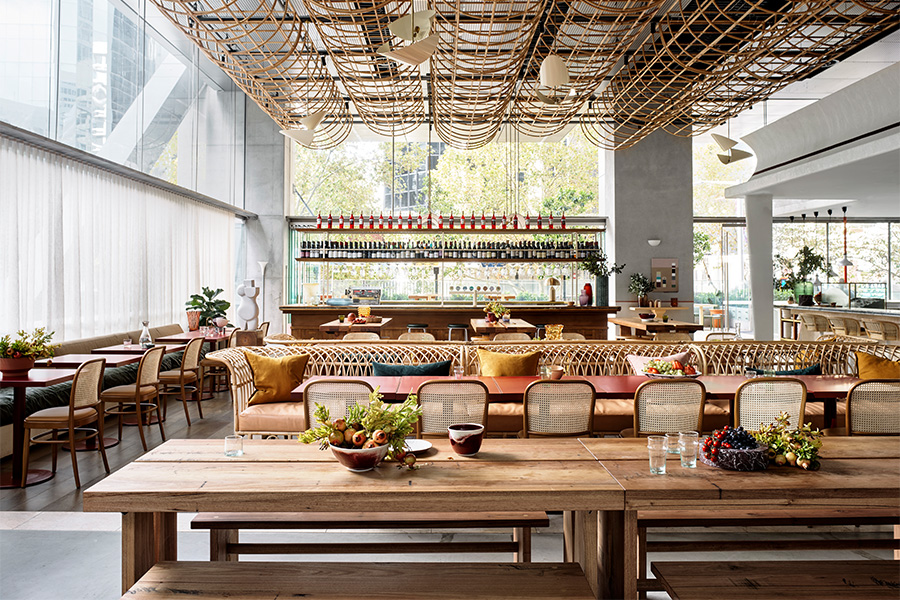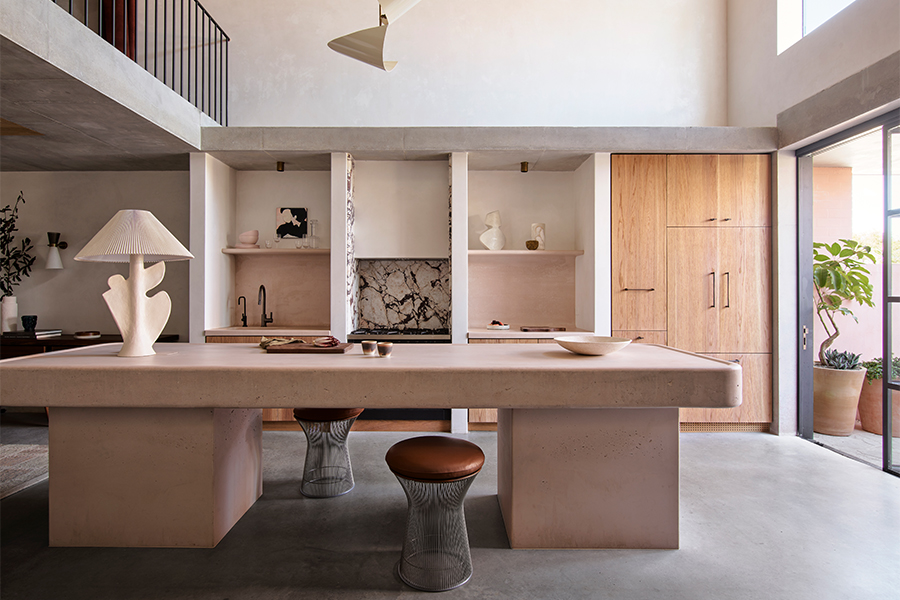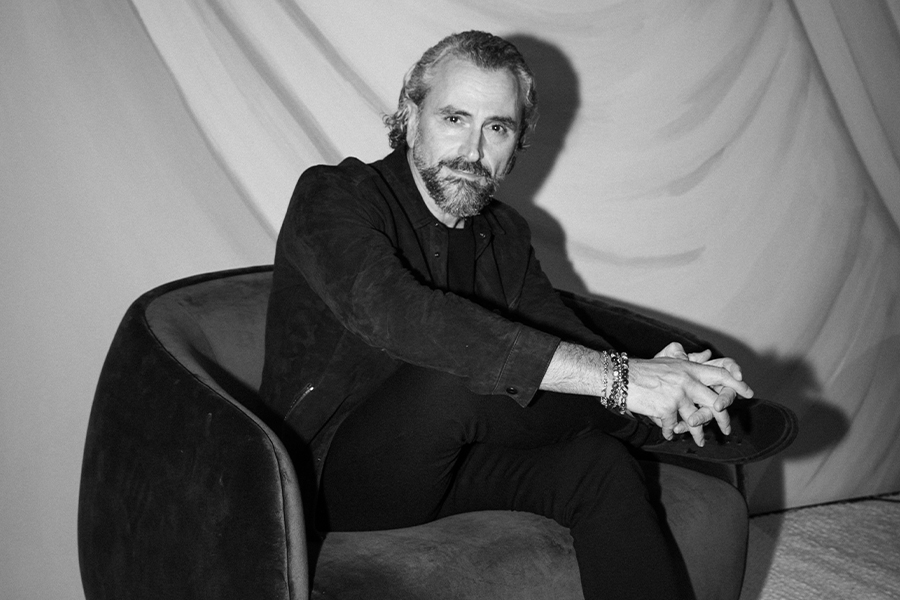As principal at Sydney-based Alexander & Co., Jeremy Bull is re-examining his firm’s role and responsibility as it approaches its 10th anniversary. “This is a design practice, which is great,” he says, “but what are we at a human level here to do?”
Such questions have led Bull to deconstruct the Anglo-centric traditions that tend to command the design industry. “The modernist training around this concept of a machine for living—it’s massively antithetical to the people who have the least amount of footprint,” he says. Bull nods to the enduring self-sufficiency of Australia’s indigenous populations in illuminating the inherent bond between a human-centric approach and sustainability. Alexander & Co.’s new phase reconsiders design for human longevity. “We’re trying to become much more exploratory and innovative with regard to sustainability.”

A rattan ceiling installation is the centerpiece of Glorietta restaurant in Sydney
Bull’s philosophical journey manifests in Alexander House, a 3,229-square-foot design lab-family home hybrid in the Bondi Junction suburb of Sydney (Bull’s personal home is located next door). Reconstructed during the COVID-19 lockdowns, Alexander House features a raw materiality. Without a layer of paint, the concrete structure is void of any toxic or artificial elements. “We accepted the imperfections as we went,” Bull says.
Geothermal and solar energy sustains the property throughout the summer months and offsets the carbon footprint of the concrete. Harvested and reclaimed timber and bricks accent the interior along with various upholsteries held to similarly stringent standards. “We had to use materials that could look great when they looked old,” Bull says. Alexander House also operates with as little blue light as possible, opting for “orange and yellow lights so we’re conscious of the VOCs that are in the environment,” he adds.

A palette of concrete, timber, and brick outfit the kitchen at Alexander House
Committing to sustainability has proven a pivotal learning experience for Bull, who now sees firsthand how much further we still have to go. “We couldn’t find anyone who could do a natural latex couch. We spoke to a specialist in ecological furniture manufacturing, and they said, ‘You’re out of luck. No one knows how to do it yet,’” Bull recalls. “This stuff is way harder than I thought it would be.”
Ultimately, Bull is pushing Alexander & Co. to continue to define itself through an innovative lens that contemplates where we want to be instead of where we are. “We should be ensuring that this is an industry that doesn’t run out of resources,” he says. “Our buildings do not need to be machines. No one wants to be a machine. We want to be humans.”

Concrete, rattan, and stone form the backdrop for Burleigh Pavilion’s colorful accents
This article originally appeared in HD’s June/July 2021 issue.
More from HD:
Two Philadelphia Entrepreneurs Put Community First
Sustainable, Locally Sourced Materials Flourish at Casa Hormiga
IRTH Landscape Hotel and Spa Showcases Its Surroundings


